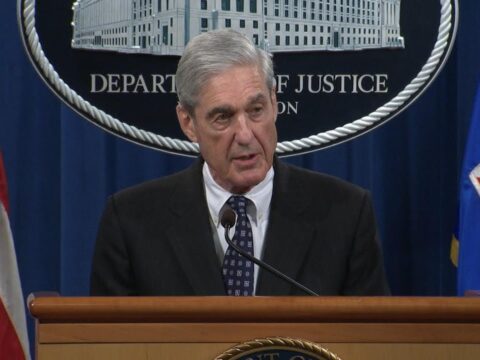Actor Hill Harper is committing $1 million from his Black Wall Street digital wallet platform to survivors and their descendants.
ABC News Live Update, Weekdays at 9 AM & 11AM EST
WATCH the ABC News Live Stream: https://bit.ly/3rzBHum
SUBSCRIBE to ABC News: https://bit.ly/2vZb6yP
Watch More on http://abcnews.go.com/
LIKE ABC News on FACEBOOK: https://www.facebook.com/abcnews
FOLLOW ABC News on TWITTER: https://twitter.com/abc
#ABCNLUpdate #Tulsa #BlackWallStreet





















One of the last of the major riots of the “Red Summer†of 1919, the so-called race riot in Elaine, Arkansas was in fact a racial massacre. Though exact numbers are unknown, it is estimated that over 200 African Americans were killed, along with five whites, during the white hysteria of a pending insurrection of black sharecroppers. The violence, terror, and concerted effort to drive African Americans out of Phillips County, Arkansas was so jarring that Ida B. Wells, a founder of the National Association for the Advancement of Colored People (NAACP), published a short book on the riot in 1920. It was also widely reported in African American newspapers like the Chicago Defender and generated several public campaigns to address the fallout.
On the night of September 30, 1919, approximately 100 African Americans, mostly sharecroppers on the plantations of white landowners, attended a meeting of the Progressive Farmers and Household Union of America at a church in Hoop Spur, a small community in Phillips County, Arkansas. They hoped to organize to obtain better payments for their cotton crops. Aware of white fears of Communist influence on blacks, the union posted armed guards around the church to prevent disruption and infiltration.
During the meeting, three white men pulled up to the front of the church. One of the men asked the guards, “Going coon hunting, boys?†Gunfire erupted after the guards made no response. Though sharp debate exists as to who fired first, the guards killed W.A. Adkins, a security officer from the Missouri-Pacific Railroad, and injured Charles Pratt, the deputy sheriff.
The next morning, an all-white posse went to arrest the suspects. Though they encountered little opposition from the black community, the fact that blacks outnumbered whites ten-to-one in this area of Arkansas resulted in great fear of an “insurrection.†The concerned whites formed a mob numbering up to 1,000 armed men, many of whom came from the surrounding counties and as far away as Mississippi and Tennessee. Upon reaching Elaine, the mob began killing blacks and ransacking their homes. As word of the attack spread throughout the African American community, some black residents fled while others armed themselves in defense. The mob then turned its attention to disarming those blacks who fought back.
Meanwhile, local white newspapers further inflamed tensions by reporting that there were planned black uprisings. By October 2, U.S. Army troops arrived in Elaine, and the white mobs began to disperse. Federal troops rounded up and placed several hundred blacks in temporary stockades, where there were reports of torture. The men were not released until their white employers vouched for them. There was also considerable evidence that many of the soldiers sent to quell the violence engaged in the systematic killing of black residents.
In the end, 122 blacks but no whites were charged by the Phillips County grand jury for crimes related to the riots. Their court-appointed lawyers did little in their defense despite the investigation and involvement of the NAACP. The first 12 men tried for first-degree murder were convicted and sentenced to death. As a result, 65 others entered plea bargains and accepted up to 21 years for second-degree murder. Led by black attorney Scipio Africanus Jones, the NAACP and other civil rights groups worked towards retrials and release of the “Elaine Twelve.†Eventually they won their release, with the last of the twelve set free on January 14, 1925.
SUBJECTS:African American History, EventsTERMS:20th Century (1900-1999), United States – Mississippi, United States – Tennessee, Civil Rights – NAACP, United States – Missouri, United States – Arkansas, Racial Conflict – Mob Violence, Racial Conflict – Victims of violence, Political Activists – Radicals and Marxists, Television and print
Who cares
How about a million to rebuild Black Wall Street not just commemorate.
https://youtu.be/2eZ18GkBMjU
The US military bombed black wall street. Let that sink in
I hope if they do build it keep it Black Wall Street Keyword Black
A thriving black community they called black Wallstreet? Just wondering why they didn't rebuild? Name another so called Thriving Black Community or was there only one? This was a riot and just because many years have past you can't change history. Stop worrying about the past and work on stopping the killing of the 100's of blacks being killed in Chicago every month. Or the millions of black babies being killed by abortions every year. / /
Black people need to be exempt from state and federal taxes for the next ten years.
It was more than 300 ppl….yall just saying that so that you all don't feel half as guilty
Healing always heals when you rehash things years later…..says every husband NEVER!
1https://youtu.be/H–xP8Xvnd8
Is it 300 or 39 according to fbi?
Gata🌷
Here we go again. Killed for BLACK WITH A PHONE or SUBWAY SANDWICH or JAY WALKING.
The World should hold the US accountable for American human rights abuses at home and abroad.
Feb 1964 – A change is gonna come – Sam Cooke. 1965 – Color of Man’s Skin 4:41–6:15 – Billy Graham.
Aug 2017 – Very fine people, on both sides – Traitor Trump. May 2020 – George Floyd and BLM protests.
Is the US still the Land of the Free or the Land of the pinky power MAGATs?
Ask the First Nations what they think.
Ask Blacks when they see Police and Karen.
Ask Chinese when you say Chinese Flu or you shoot them because of Traitor Trump's xenophobic rhetoric.
Racism exists, but it is not welcome here. We are not immune to the viruses of hate, of fear, of other.
We never have been. But we can be the nation that discovers the cure.†Jacinda Ardern, New Zealand PM.
BLM Black Livestock Massacred
BLM Blue Lives Matter
BLM Black Lives Massacred
BLM Black Livestock Massacred
Wonder how many black businesses BLM and antifa burned down in the past year
Nothing built on lies will stand.
300? Only extremists say that. It's 10 white and 26 black, or 50 white and 150 black, according to Wikipedia. What about reparations for the white?
Only 2 public school textbooks. Unbelievable🤬
Rebuilding the 'Black Wall Street' looks very laudable and historic.
Good for Hill Harper. It would be cool if Elon Musk donated also.
Sue George Kaizer!!!